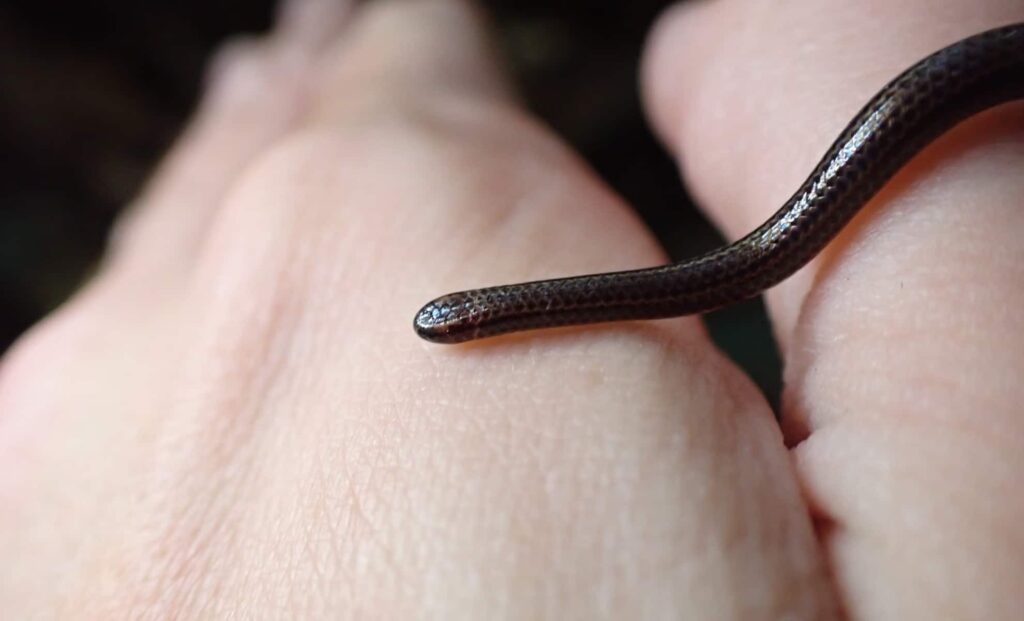The rediscovery of this elusive reptile, which had vanished from scientific records since its description in 2008, confirms its continued survival in an island environment that has lost nearly all of its natural forest. For conservationists, the find is a key reminder that species presumed extinct may still endure in isolated habitats—if only someone looks closely enough.
Barbados is home to several unique reptile species, but habitat loss and invasive animals have dramatically reduced native biodiversity. The threadsnake’s reappearance not only adds an entry back to local checklists—it also lends weight to protection efforts focused on microhabitats, such as shaded gullies and moisture-rich soil patches.
Fieldwork Leads to Unexpected Discovery
The tiny snake was found under a rock during a structured search by a local team led by Connor Blades, a project officer with Barbados’ Ministry of the Environment, and conservation group Re:wild. The animal was recorded and then returned safely to its habitat, a humid forest fragment in the island’s center. Its identification was later confirmed through morphology checks and microscopy.
The team’s success followed a strategy based on past observations of the species’ preferences: loose soil, leaf litter, and the presence of ant or termite colonies. These clues narrowed the search zones considerably. Unlike traditional broad-area surveys, this focused approach yielded results within a known ecological niche.
The Barbados threadsnake measures only 8 to 10 centimeters in length and weighs just a few grams. Its size is so small that hatchlings are barely able to survive unless they have enough body reserves. According to Earth, the species lays only a single elongated egg at a time, making every successful breeding event vital to its persistence.

Resemblance to Invasive Species Complicates Identification
Field identification was complicated by the presence of the Brahminy blind snake (Indotyphlops braminus), a widespread invasive species that looks remarkably similar. The Brahminy snake, however, lacks the faint orange dorsal lines and has a different head structure. Its ability to reproduce without mating adds to its invasive potential.
The rediscovered threadsnake displayed specific traits: lateral eye placement, a defined rostral scale on the snout, and subtle coloring along its back. Careful morphological checks were used to avoid misidentification, as the two species often overlap in territory and appearance.
By confirming these features through microscopy and expert review, the team reduced future confusion in field data. This clarity is essential for updating conservation strategies and ensuring accurate biodiversity records.
Survival Under Pressure from Habitat Loss
Barbados has seen severe deforestation over the centuries, with approximately 98% of its primary forest cleared since colonial times. The threadsnake is thought to survive in what little remains—scattered patches of forest and deep gullies that still hold moisture and shelter from heat.
These habitats are shrinking under pressure from agriculture, grazing, and edge effects that dry out the soil. The threadsnake relies on very specific environmental conditions: stable leaf litter and cool, damp ground where ants and termites raise their young. Habitat fragmentation poses a major risk, especially since the species likely requires encounters between males and females to reproduce.
While the invasive blind snake spreads rapidly through parthenogenesis, the threadsnake’s reproductive rate is far more limited. This adds urgency to habitat protection and monitoring, as small disruptions can have lasting effects on a population already pushed to the margins.
Moving Forward with Care and Precision
The rediscovery has prompted new conservation planning. Survey teams now have clearer information about when and where the snake is most likely to surface. Identifying ideal weather conditions and soil types will allow future efforts to be more efficient and less disruptive.
Field protocols have also been designed to avoid harming individuals or habitats. Researchers lift cover objects gently and replace them exactly as found, minimizing the risk of crushing or exposure to predators. These low-impact practices are essential when working with such fragile species.
Local communities are also being encouraged to participate. Clear photos and videos of any future encounters could support expert confirmation, especially if they include the snake’s head and back patterns. Raising awareness among residents could turn accidental discoveries into meaningful data.

